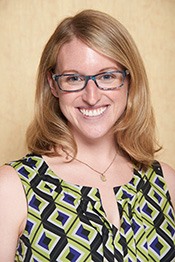Medical Physics and the Journal of Applied Clinical Medical Physics: The Evolving World of Publishing
M Mills1*, J Boone2*, S Benedict3*, S Hedrick4*, (1) James Graham Brown Cancer Center, Louisville, KY, (2) UC Davis Medical Center, Sacramento, CA, (3) UC Davis Cancer Center, Sacramento, CA, (4) Provision Center for Proton Therapy, Knoxville, TN
Presentations
WE-H-206-0 (Wednesday, 7/13/2022) 4:30 PM - 6:00 PM [Eastern Time (GMT-4)]
Room 206
The world of scientific publishing is evolving, and Medical Physics and the Journal of Applied Clinical Medical Physics (JACMP) are keeping pace. The publishing community continues to evolve with respect to Open Access, peer-review models, and scientific scope while striving to enhance diversity, equity, and inclusivity (DEI) in our field. There are both benefits and challenges that come with this new focus.
One example is an evolving scientific scope and increasing number of scientific manuscripts submitted to medical physics journals. The Medical Physics journal has been led by a single or trio of Editors for most of its history. Considering the evolving focus of the publishing community, a new editorial model comprising 15 deputy editors and a leadership team was established in January 2021, which has proven to be useful. The Medical Physics Editor-in-Chief will describe this new editorial model and share personal insights on how best to prepare a manuscript for submission to Medical Physics.
Another challenge of DEI is increasing access to medical physics publications, which can be improved using an open access publishing model to make research and scholarly communication more open and efficient. However, we need to answer questions such as: 1) How open is the journal and how open does it need to be? 2) How does open access facilitate the authors’ research and communication of their research? 3) How do open access journals assure quality peer-review, editing, and editorial standards? 4) How do open access journals assure support for the concepts of DEI given that review is double-blind, and the selection of Associate Editors is largely random and primarily based on the Editor’s expertise? The Editor-in-Chief of the JACMP will answer these questions and continue to explore the evolution of medical physics publishing.
Learning Objectives:
1. Recognize diversity, equity, and inclusivity in the scientific publishing process
2. Understand how medical physics journals are evolving
3. Compare and contrast open accessing publishing to traditional publishing
4. Develop strategies for successful manuscript preparation
Handouts
- 175-63412-16361659-183398-1678560688.pdf (Samantha Hedrick)
- 175-63409-16361659-183662-1671798801.pdf (Michael Mills)
Keywords
Not Applicable / None Entered.
Taxonomy
Not Applicable / None Entered.
Contact Email











